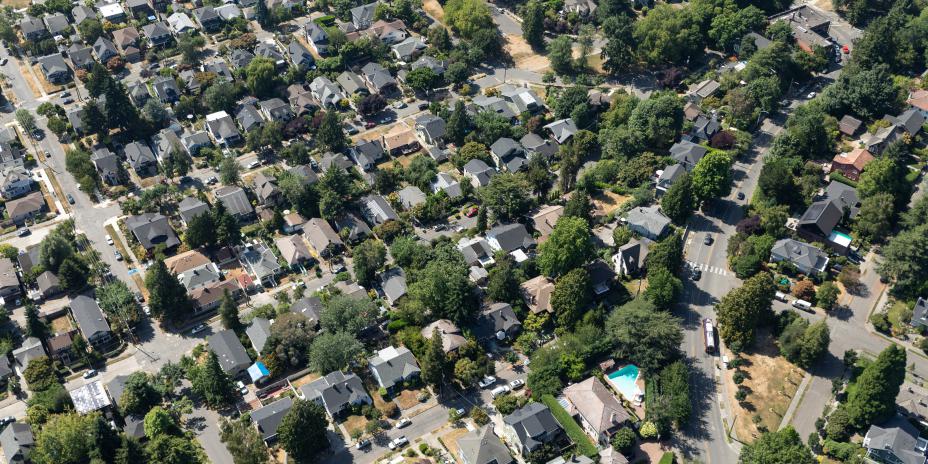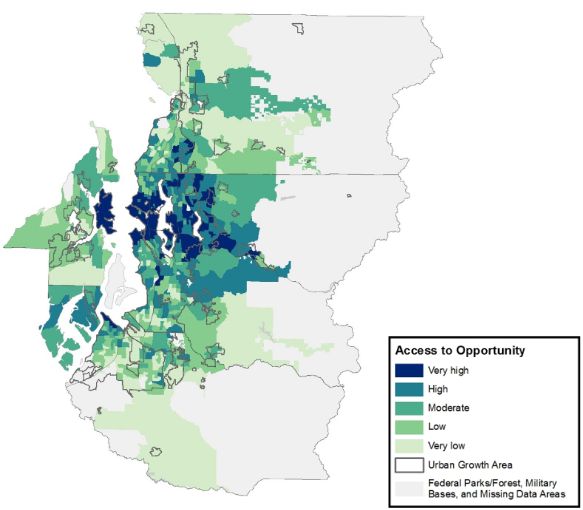The central Puget Sound region's housing landscape reflects more than just market forces and conditions. It is also the product of decades of public policies and private practices that served to exclude people of color from accessing housing and living in all communities.
On this page, PSRC maps residential settlement patterns across the region by race, explores the various causes of racial residential segregation that contributed to these patterns, and offers data resources for analyzing segregation and its relationship to opportunity access.
Racial Settlement Patterns in the Region
Using data from the 2020 Census, PSRC's racial settlement patterns maps illustrate the distinct settlement patterns of the region's population across racial and ethnic groups.
The Civil Rights and Labor History Consortium at the University of Washington uses historical Census data to map racial settlement and segregation patterns over time throughout Washington state.
Causes of Residential Segregation
There are many factors contributing to racially segregated patterns of settlement, which can be classified into three categories.
The federal Fair Housing Act of 1968 guarantees that all people have the right to equal housing opportunities regardless of race, color, religion, national origin, or other federally protected classes. The act prohibits all forms of intentional discrimination in housing practices as well as unintentional discrimination, where neutral policies and practices have a negative or disparate impact on members of a protected class.
Dissimilarity Index - A Measure of Residential Segregation
The dissimilarity index helps us to understand the degree of racial residential segregation in the region.

Segregation and the Geography of Opportunity
Looking at patterns of residential segregation in relation to access to opportunity helps us better understand how segregation may benefit or burden different communities.
Regional Policies and Strategies to Address Racial Residential Segregation
Together, past and current discriminatory housing practices have perpetuated substantial inequities in housing choices and opportunity and continue to create barriers to rectifying these conditions. VISION 2050 recognizes this legacy and of the comprehensive work needed to redress it.
PSRC is working to develop data analysis, resources, and guidance to support the implementation of strategies to address racial residential segregation and disparate access to opportunity.


